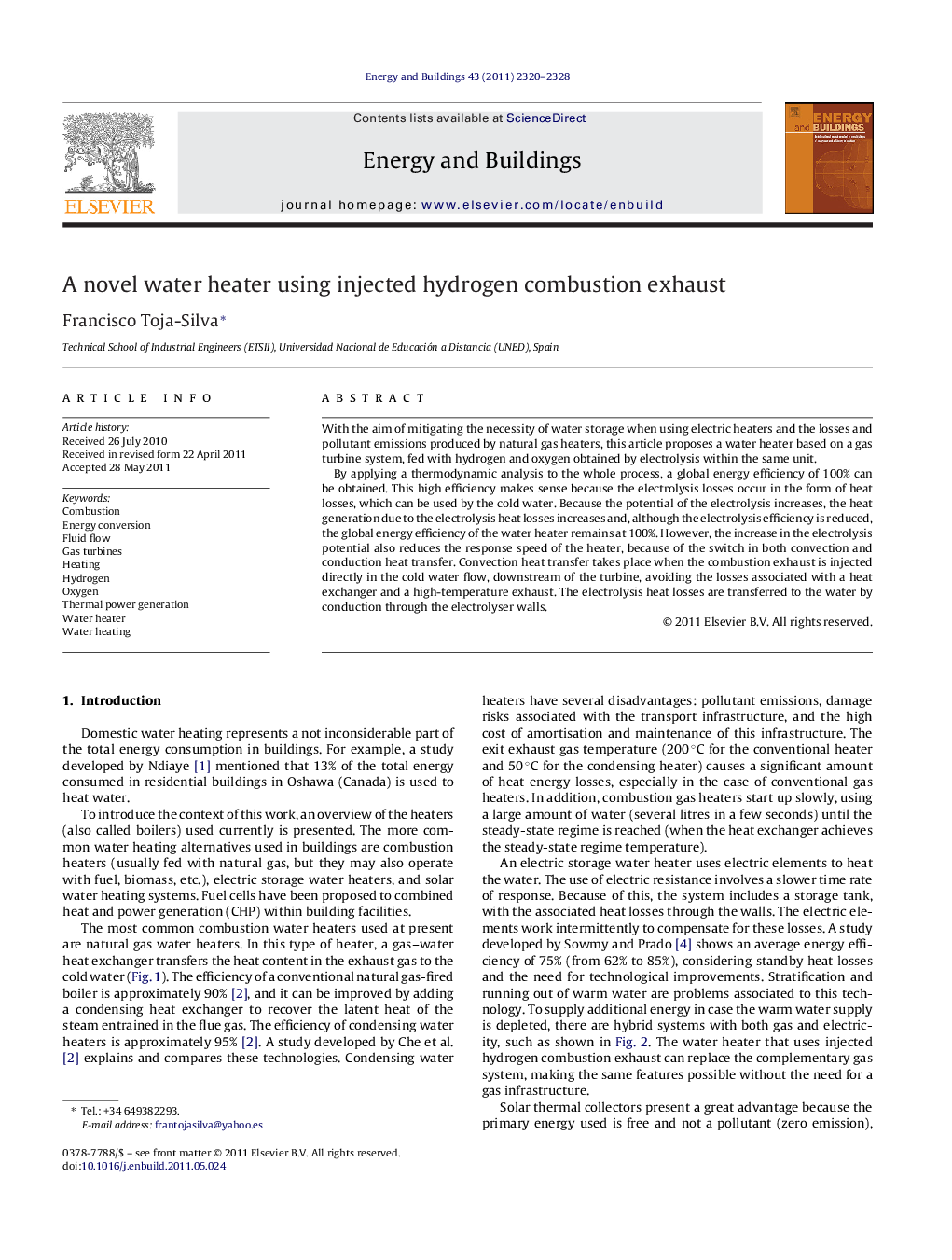| Article ID | Journal | Published Year | Pages | File Type |
|---|---|---|---|---|
| 264320 | Energy and Buildings | 2011 | 9 Pages |
With the aim of mitigating the necessity of water storage when using electric heaters and the losses and pollutant emissions produced by natural gas heaters, this article proposes a water heater based on a gas turbine system, fed with hydrogen and oxygen obtained by electrolysis within the same unit.By applying a thermodynamic analysis to the whole process, a global energy efficiency of 100% can be obtained. This high efficiency makes sense because the electrolysis losses occur in the form of heat losses, which can be used by the cold water. Because the potential of the electrolysis increases, the heat generation due to the electrolysis heat losses increases and, although the electrolysis efficiency is reduced, the global energy efficiency of the water heater remains at 100%. However, the increase in the electrolysis potential also reduces the response speed of the heater, because of the switch in both convection and conduction heat transfer. Convection heat transfer takes place when the combustion exhaust is injected directly in the cold water flow, downstream of the turbine, avoiding the losses associated with a heat exchanger and a high-temperature exhaust. The electrolysis heat losses are transferred to the water by conduction through the electrolyser walls.
Graphical abstractFigure optionsDownload full-size imageDownload as PowerPoint slideHighlights► A zero emission water heater is proposed. ► Water electrolysis and hydrogen–oxygen combustion reaction take place. ► Combustion exhaust (steam) is injected directly in the cold water flow. ► Global energy efficiency of the water heater is 100%.
